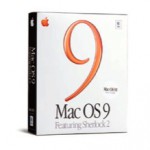 The current generation of Mac operating system upgrades began in 1999 with the introduction of Mac OS X (the X is the Roman numeral 10). OS X changed the look of Mac’s Linux-based system from the 1984 inauguration of OS 9, which was finally phased out in 2002. For over 30 years the Mac operating system has been the flagship for the “computer for the rest of us,” the Macintosh. (Watch this old Mac commercial and see Steve Jobs introduce the first “insanely great” new Macintosh.)
The current generation of Mac operating system upgrades began in 1999 with the introduction of Mac OS X (the X is the Roman numeral 10). OS X changed the look of Mac’s Linux-based system from the 1984 inauguration of OS 9, which was finally phased out in 2002. For over 30 years the Mac operating system has been the flagship for the “computer for the rest of us,” the Macintosh. (Watch this old Mac commercial and see Steve Jobs introduce the first “insanely great” new Macintosh.)
 The modern Mac operating system, nicknamed Yosemite (version 10.10) comes preloaded on every new Mac. It replaced version 10.9, Mavericks, and the upgrade is a download from the Apple App Store.
The modern Mac operating system, nicknamed Yosemite (version 10.10) comes preloaded on every new Mac. It replaced version 10.9, Mavericks, and the upgrade is a download from the Apple App Store.
 Apple has taken somewhat of a more measured approach to upgrading their operating system. Relying on a consistent and familiar user interface, upgrades have been incremental. The operating system has been adapted to the industry-standard Intel processor, which, among other things, allows users to run Microsoft Windows on any Mac.
Apple has taken somewhat of a more measured approach to upgrading their operating system. Relying on a consistent and familiar user interface, upgrades have been incremental. The operating system has been adapted to the industry-standard Intel processor, which, among other things, allows users to run Microsoft Windows on any Mac.
 Yosemite, released in mid-October 2014, like its predecessors is not a complete revamp like the (some say confusing) Windows 8. There are some improvements in the Spotlight searcher, the Safari web browser, as well as the Mail and Calendar apps. Also, look for better continuity and sharing between your Mac and all your devices.
Yosemite, released in mid-October 2014, like its predecessors is not a complete revamp like the (some say confusing) Windows 8. There are some improvements in the Spotlight searcher, the Safari web browser, as well as the Mail and Calendar apps. Also, look for better continuity and sharing between your Mac and all your devices.
 So Apple has avoided all the operating system upgrade problems experienced by Microsoft – e.g., Vista and Windows 8. Yosemite is a rock-solid operating system with value-added apps – Photos (formerly iPhoto), Maps, Mail, Calendar, Contacts, etc. – all of which work great, both on the hard drive and on the free Apple Cloud storage.
So Apple has avoided all the operating system upgrade problems experienced by Microsoft – e.g., Vista and Windows 8. Yosemite is a rock-solid operating system with value-added apps – Photos (formerly iPhoto), Maps, Mail, Calendar, Contacts, etc. – all of which work great, both on the hard drive and on the free Apple Cloud storage.
If you’re looking to upgrade your business or home computer network, contact us. We are your Mac personal computing as well as B2B resource. We would love to either get you started or keep you going, whatever your personal or business needs for hardware, software or training.